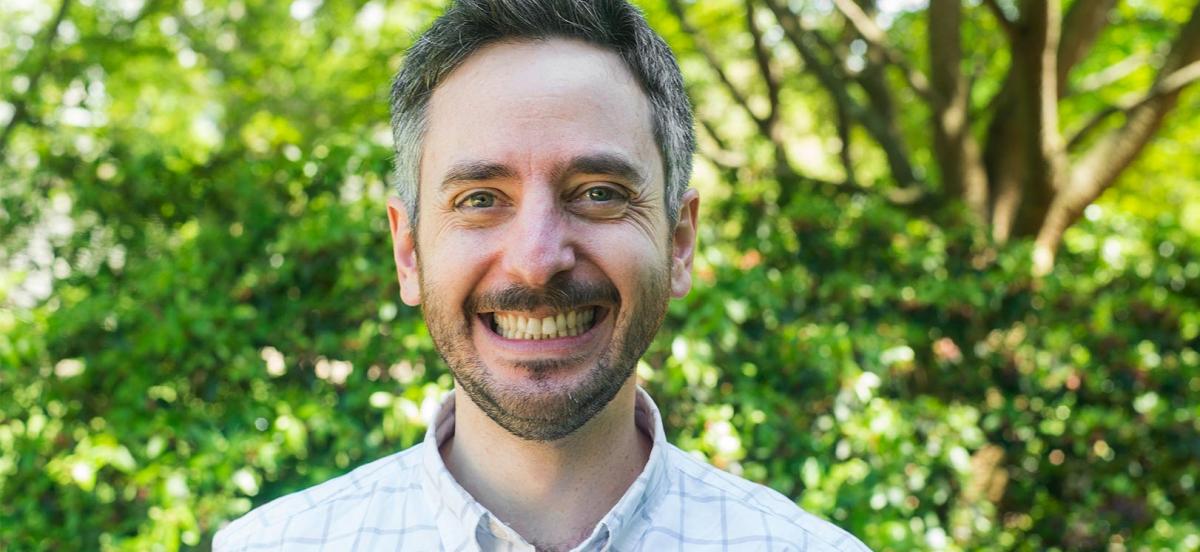Jonathan Wilson Awarded NSF Grant

Assistant Professor of Biology and Environmental Science Jonathan Wilson. Photo by Patrick Montero.
Details
The Associate Professor of Biology and Environmental Studies and his collaborators at the Smithsonian Institution were awarded $782,932 to uncover how plant life responded to changes in atmospheric carbon dioxide concentration millions of years ago.
Associate Professor of Biology and Environmental Studies Jonathan Wilson’s research is focused on the intersection of plant evolution and shifting concentrations of carbon dioxide in the atmosphere. At a pivotal moment in the course of the planet’s changing climate, Wilson, who also serves as the director of the Environmental Studies Program, has found it helpful to look into the distant past.
Funded by a $782,932 grant from the National Science Foundation (NSF), Wilson and his colleagues hope to uncover how plant life millions of years ago responded to changes in atmospheric carbon dioxide concentration and to apply that knowledge to a model for predicting future environmental responses to increasing carbon dioxide levels.
"The grant is to fund a project with two major scientific goals: to understand how full-grown plants with a long evolutionary history respond to changes in atmospheric carbon dioxide concentration, and to use the calibration that we derive from these plants to reconstruct the changes in atmospheric CO2 concentration during an event called the Paleocene-Eocene Thermal Maximum (PETM) 55.5 million years ago,” said Wilson. “This paleoclimatic event records a burst of warming and ocean acidification that is the best analogue for anthropogenic climate change—it's the only ‘experiment’ that we can turn to in order to understand how the planet responds to a sudden burst of CO2 and subsequent warming.”
Using Ginkgo biloba trees, which Wilson describes as a “living fossil,” he and his team will observe plant growth at varying levels of carbon dioxide concentration, ranging from the early 21st century level of 400 parts per million (ppm) to the predicted levels of 600ppm, 800ppm, and 1000ppm that reflect climate change. The team will analyze the physiological responses of the Ginkgo trees and quantify how accurately the gas-exchange pores on their leaves, called stomata, record the external CO2 concentration. These statistical relationships will help refine the paleobotanical record of climate change over the last 66 million years.
"This project extends the general aim of work that I've been doing in the Paleozoic Era—about 300 million years ago—into the more-recent distant past the Cenozoic Era: the last 66 million years,” he said. “It's the same overall motivation—understanding how plants responded to and drove climatic change—but in a different part of time and within a larger experimental framework.”
This new grant will support Wilson, his students, and his collaborators at the Smithsonian Institution Department of Paleontology and the Smithsonian Ecological Research Center. There is also a citizen science portion of the project for which people around the globe can send in Ginkgo leaves to be analyzed by Wilson and his team. Anyone can use the online platform Zooniverse to participate in the research undertaking by counting stomata on digitized Ginkgo leaves themselves.
Wilson hopes that this project, formally titled “Collaborative Research: New Estimates of Atmospheric pCO2 from the Paleocene-Ecocene,” will be used as thesis research or capstone projects for biology and environmental studies students in the next three years.
The project will run for a minimum of three years, and Wilson looks forward to having student input and participation as a major element of the research.
"I'm particularly excited about this grant because it reserves dedicated funding for two Haverford students to spend their summers working with us as paid scientific research assistants at the Ginkgo site in Maryland,” said Wilson. “They will be trained at Haverford during the academic year and then work with us on all aspects of the experiment: conducting physiological and environmental measurements, working with our fossil leaves, and getting a hands-on introduction to an experimental insight into past climate. I can think of no better match for Haverford students than an environmental project with global relevance and novel outreach components.”



